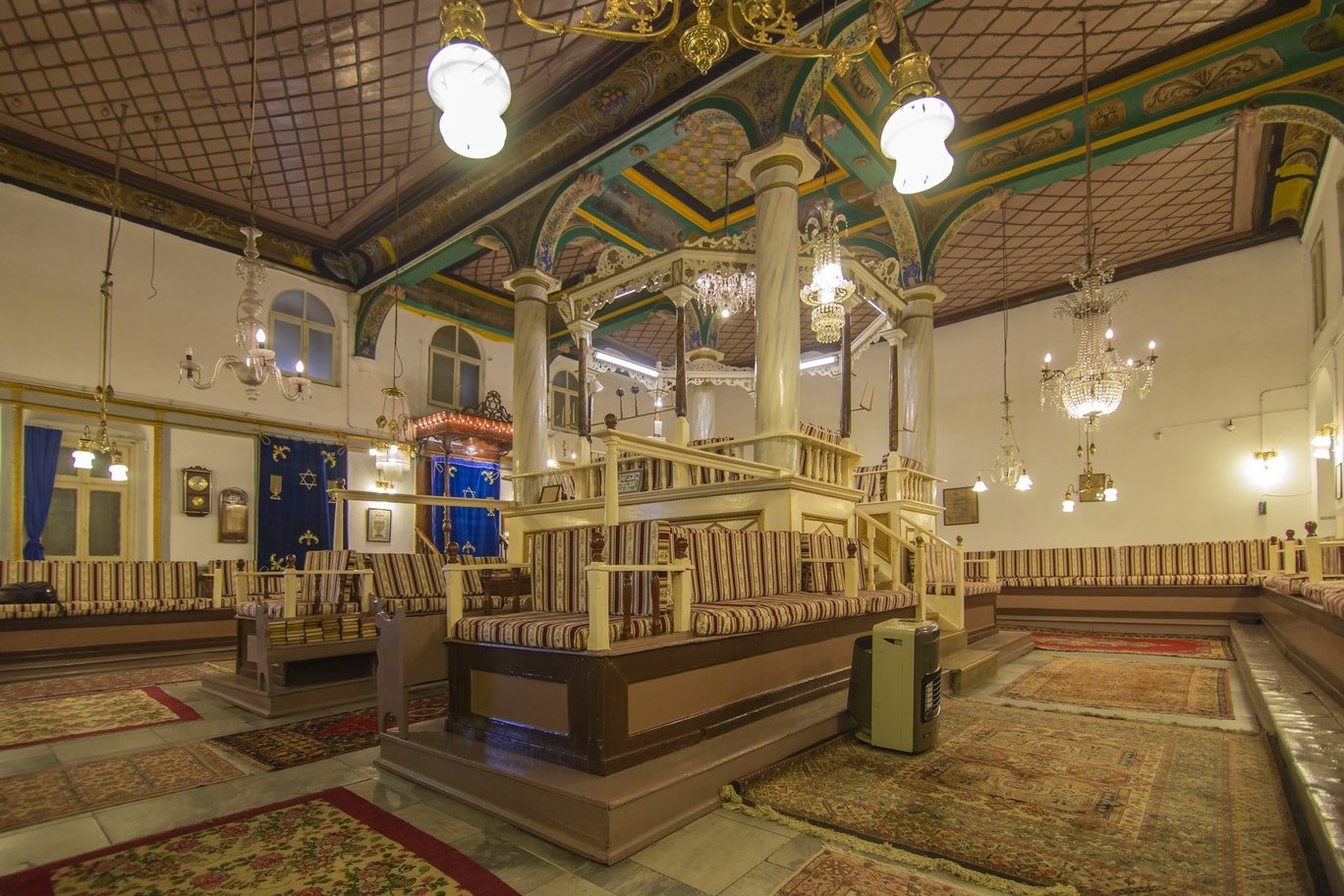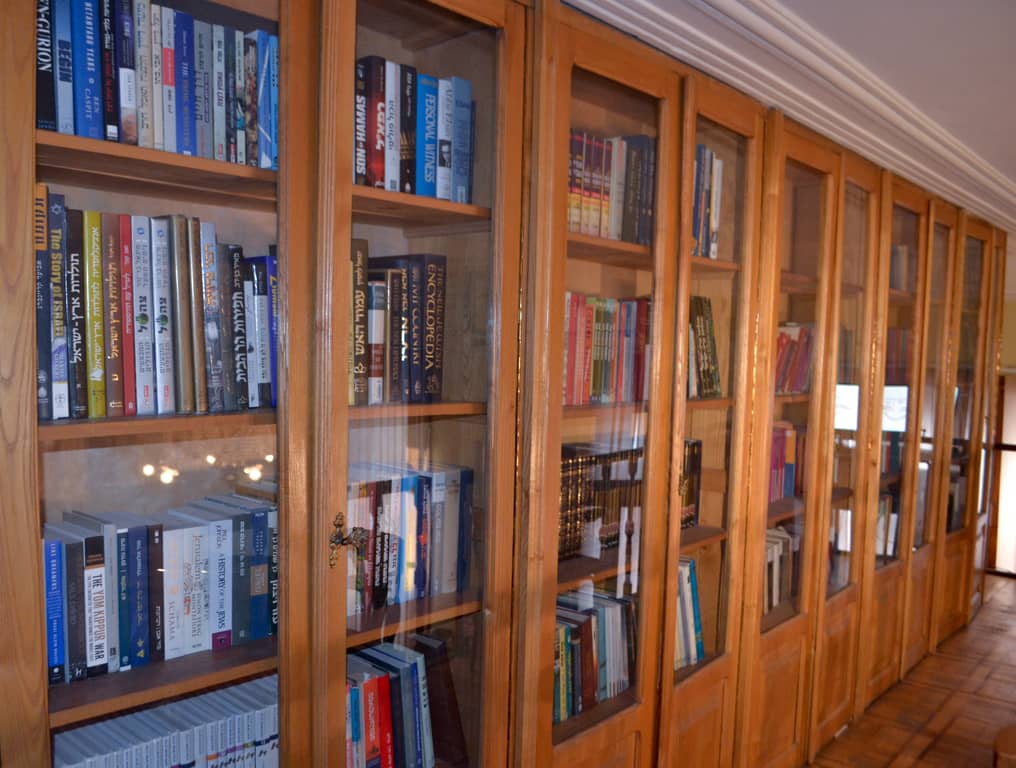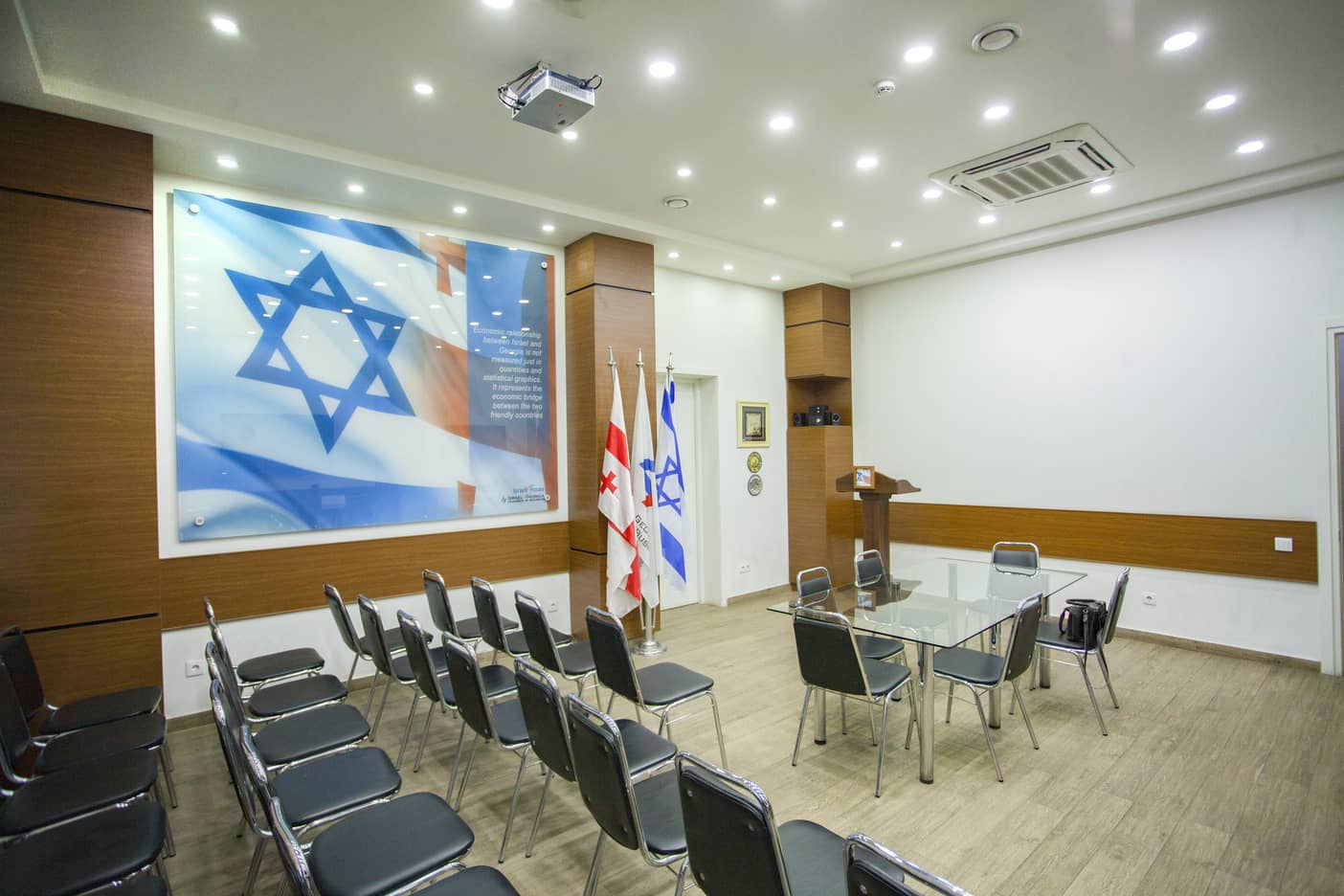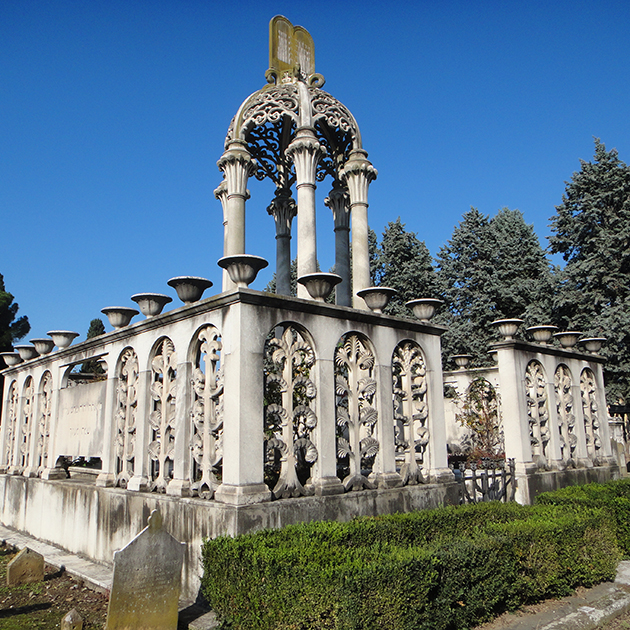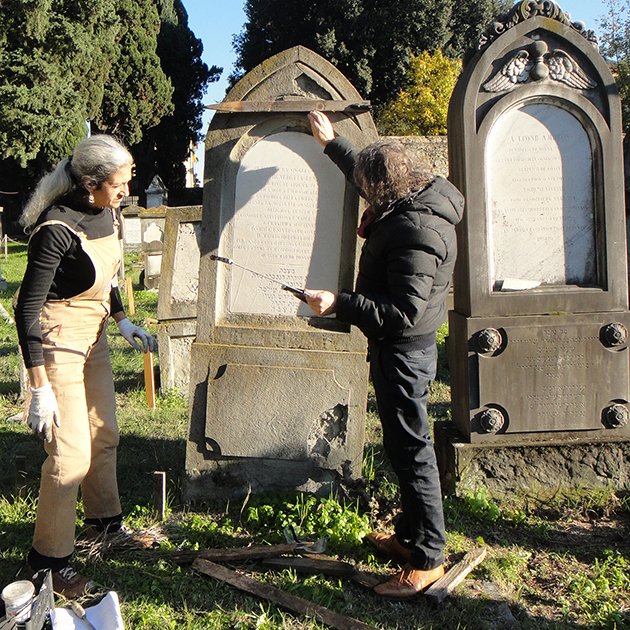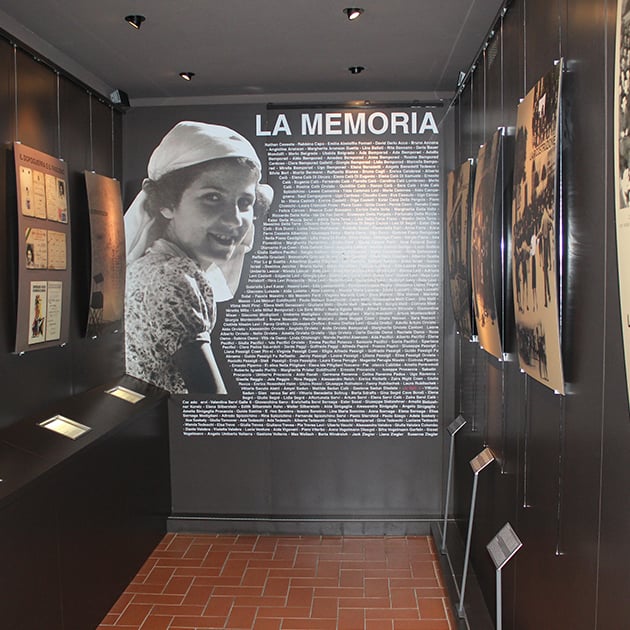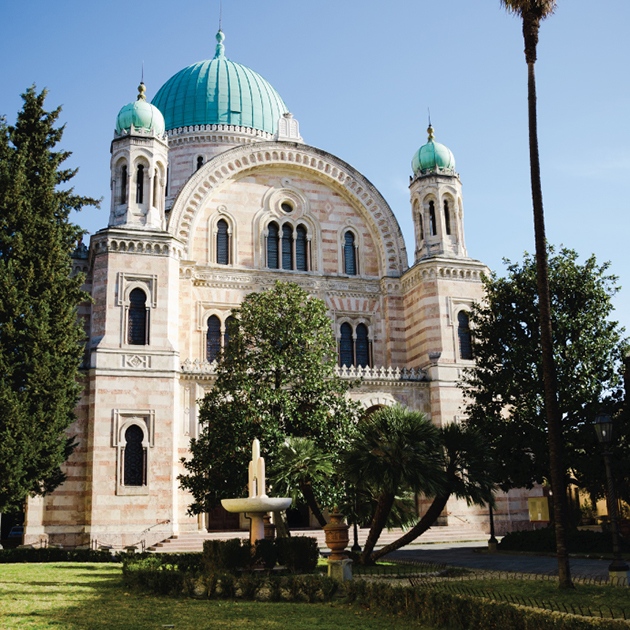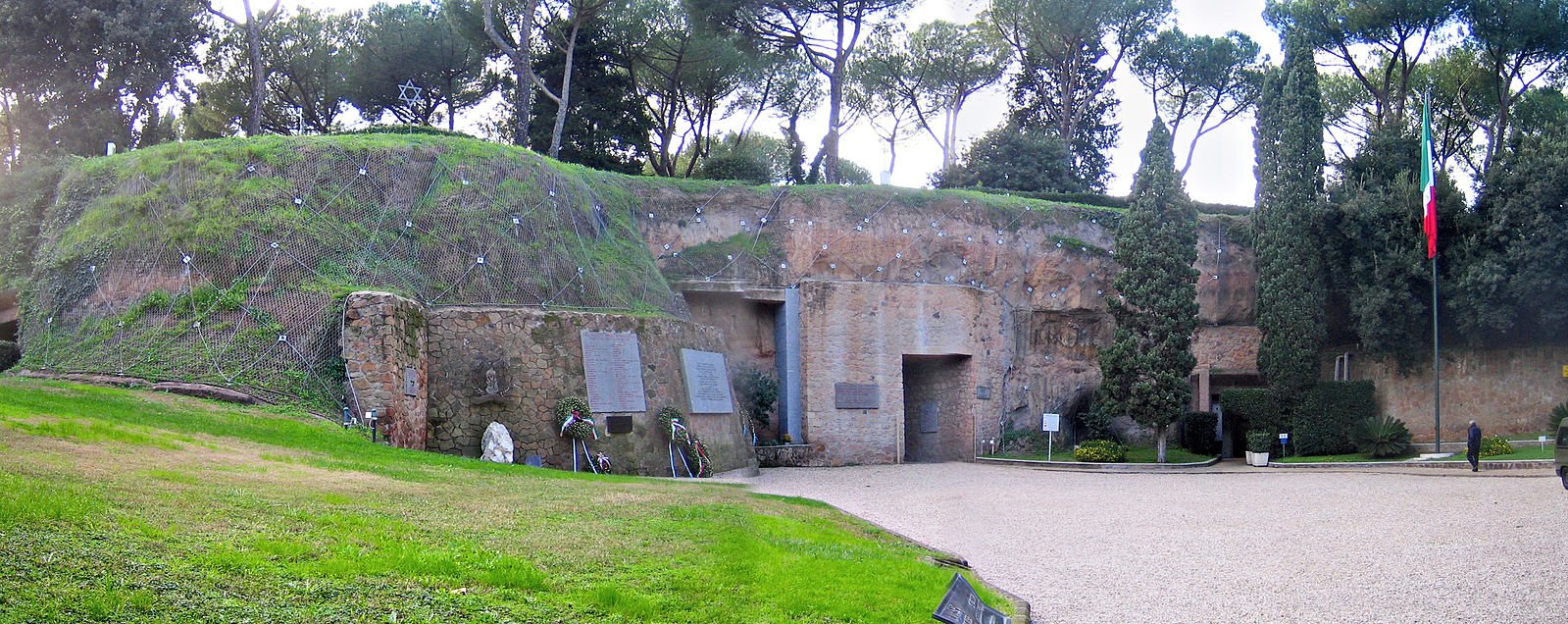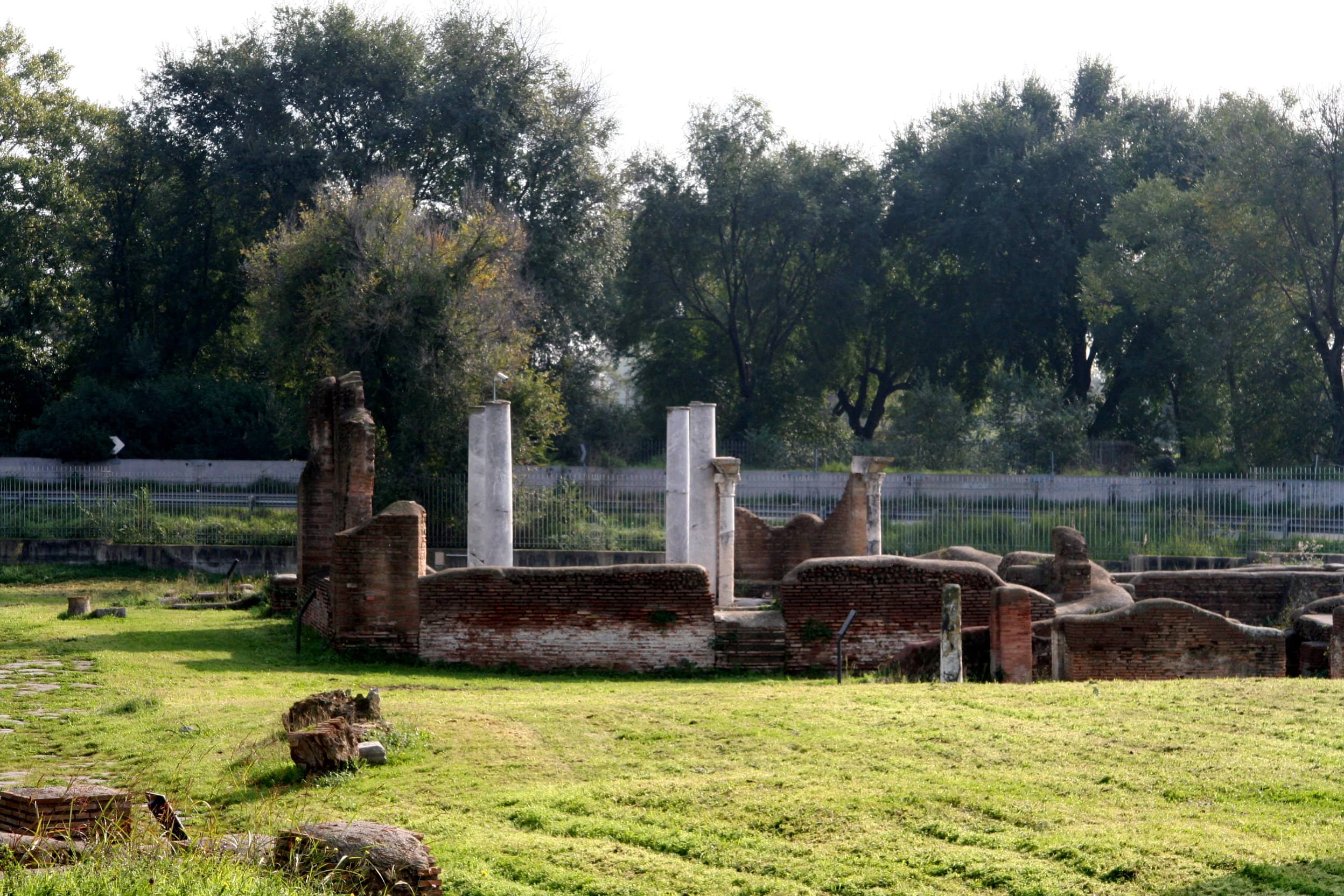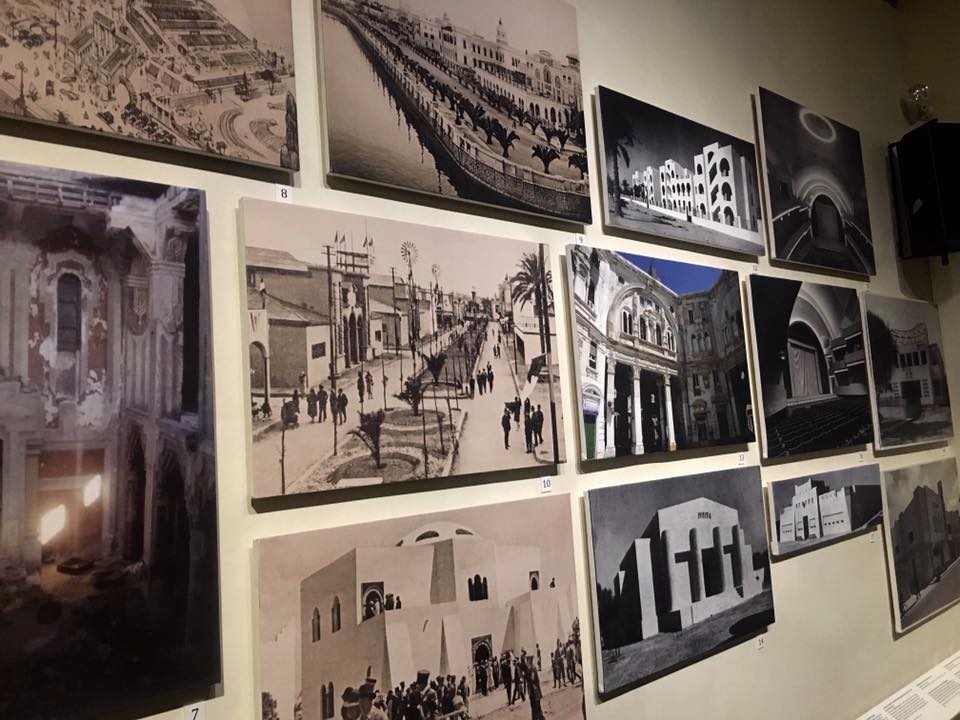In 1724, Salomon de Ciaves, a Portuguese originned Dutch immigrant to Izmir, donated one of his houses which had a large courtyard, to be used as a synagogue and ensured the purchase of all the religious books and sacred objects required. He also granted some houses and shops adjacent in order to bring some revenue to the synagogue.
At first known as the “Ciaves Synagogue”, it started to be called as the Bikur Holim Synagogue. This new name, meaning visiting the sick, dates to the periods when the basement of the synagogue was used as a hospital during a plague or cholera epidemics, then frequently seen in the city.
It is also possible that the said basement was once the Bet Din prison. Burnt in 1772, the synagogue was rebuilt in 1800 by Manuel de Ciaves of the same family.
With a central Tevah, ceiling decorated with flower and fruit designs embellished columns painted in green and yellow, this synagogue is one of the most beautiful places of worship in Izmir.
Site Tag: Attraction
Jewish Library in National Parliamentary Library of Georgia
Jewish library is located in the National Parliamentary Library of Georgia; books which are stored in the library were bought by “Sarah Fond ” with the “Israeli House”. These books in Hebrew, English and Russion are dedicated to the oldest and modern history of Israel, Zionism, Judaism, theology, foreign affairs of Israel. Among the books there are textbooks for learning Hebrew. On the day of the opening Hanukkah candle was lit and among the guests there were members of the Knesset. Giorgi Kekelidze, the director of the library, gave a speech at the ceremony.
Israeli House
The Israeli House NET (NGO) was established in 2013 in Tbilisi and works to achieve solidarity by public diplomacy and enhance the cooperation between Israel and friendly states, among them Georgia. One of the important goals is to promote the Jewish Heritage, and present it a bridge between Georgia, Israel and the World Jewry, and also to promote the remembrance of the Holocaust.
At the Israeli House NET, lectures on topics related to Israel, and Jewish Culture and Heritage are conducted regularly. Also, meetings, exhibitions, presentations and seminars are organized in the cultural, economic, business, technological or political spheres.
The organization’s Advisory Board includes international representatives: diplomats, leading businessmen, heads of the international organizations, academic staff and public figures.
The initiator of the organization is Itsik Moshe, the president of the Israel-Georgia Chamber of Business and the first representative of the World Jewish Agency “Sokhnut” in 1990-s when the “Great Aliyah” started from the USSR.
Cemetery of Caciolle
Many places once used as cemeteries have been identified. The first, across the Arno, at the Chiasso de’ Giudei, was replaced by a second near what is currently the Lungarno della Zecca; this in turn was supplanted by others, which were created in the Porta San Frediano area. Here in 1777 the plot was purchased on today’s Viale Ariosto, to house the new Jewish burial ground which still exists, although it is no longer in use. This was joined in 1884 by the Rifredi cemetery, designed by architect Marco Treves. When it will no longer be possible to use it, a new cemetery will be founded in the San Silvestro (Cercina) area, with its grounds designed by the architect Renzo Funaro.
Cemetery of Viale Ariosto
“A corner of the city that’s hidden and unfamiliar even to most Florentines themselves”: such is the Jewish Monumental Cemetery, which opened in 1777 outside the gate of San Frediano and remained in use until 1870. A tall perimeter wall acts as a jealous guardian to protect, like a precious chest, a major cultural treasure. It is made up of funerary chapels and monuments, such as Cav. David Levi’s Egyptian pyramid-shaped tomb, which are timeworn yet worth visiting to discover this atmospheric place, which is emblematic of Jewish society. While there are none of the figurative works found in other Jewish cemeteries, some of the tombs are nothing short of sculptures, of considerable artistic value. Equally interesting are the funerary chapels in neo-Egyptian and neo-Renaissance style, such as that of the Franchetti family. The same styles are found in the oldest part of the Rifredi cemetery (13, Via di Caciolle), designed by Marco Treves (one of the three architects who designed the Tempio Monumentale) between 1881 and 1884. The recently-restored mortuary chapel takes the form of a central-plan temple in Renaissance style, with painted decorations on the inside. Jewish tradition does not allow for bodies to be exhumed, except in a few specific cases; generally more than one cemetery or “campaccio”, the term used to denote Jewish burial grounds, was found in each city. When the whole area had been covered by tombs, a new plot needed to be found, even though human and municipal circumstances often flouted this rule, requiring remains and tombstones to be moved elsewhere.
The Jewish Museum
The Jewish Museum set up on two floors inside the Synagogue completes and enriches the visit to the monumental Synagogue. It’s an amazing collection of ancient objects of Jewish Ceremonial Art, examples of the high artistic value of the Jewish Italian culture in the field of applied arts. The museum tour retraces the history of the Jews of Florence from the first settlements to the post-war reconstruction with the help of photographic panels, videos and documentary sources.
On the first floor of the museum you will find an extraordinary exhibition from the 1981, “Friends of the Jewish Museum of Florence” which offers an historic overview of the Jewish community in Florence. Thanks to a photographic collection of documents, you will discover the history of the old ghetto and its relationship with the rest of the city.
The second-floor is dedicated to the objects and the furnishings related to the most significant events in the Jewish life, family rituals and religious festivities. One room is in memory of the Holocaust and equipped for film projections. The public can access a computer area which is linked up with the main Jewish museums and centres around the world. The second floor of the museum has limited wheelchair access: upon exiting the lift, there is a slightly sloped platform, and two flights of steps (5 and 8 steps respectively) which can be used with a chairlift (which must be operated by a companion).
The Synagogue of Florence
The Synagogue of Florence is a great monumental building, a place of worship and integral part of the history of the city. The Synagogue was inaugurated in 1882, after the emancipation of Italian Jews and decentralized from the area of the old Jewish Ghetto which was demolished in the last decade of the 19th century. In the period in which Florence became the Capital City of the Kingdom of Italy, between 1865 and 1870, the Synagogue became a symbol of the acquired freedom characterized by its green copper dome and its façade. Inside you will feel a very impressive atmosphere typical of the oriental taste of the European monumental synagogues built in the late 19th century. Thanks to its monumental architecture, the Synagogue stands out and affirms the integration of the community within civil society, and the achievement of equal rights.
Fosse Ardeatine Memorial
The place is associated with the years under Nazi occupation, and commemorates the massacre by the SS as retaliation for the Partisan attack in Via Rasella when thirty-two German soldiers were killed. On the evening of March the 24th, 1944, three hundred and thirty-five people were rounded up from the city’s prisons – among them, seventy-five Jews – and taken to Via Ardeatina, where they were slaughtered. The underground passages were then blown up to conceal traces of the massacre and the bodies were retrieved only after the war.
In the large area at the centre of the quarry stands the sculpture I Martiri (“The Martyrs”) by Francesco Coccia, made to commemorate the victims, represented by the figures of an artisan, an intellectual and a teenager, bound by the wrists (1950). An opening in the quarry wall leads to the route around the tunnels, and then to the Memorial built in 1949: it is a large tombstone, a vast cement slab held up by six pillars which covers the graves, all identical and in rows.
Image attribution: antmoose, CC BY 2.0
Ostia Antica Synagogue
The ruins of the Ostia synagogue, discovered in 1961, are a crucial piece of evidence, telling us as much about the Jewish presence in the region as they do about the most ancient Jewish diaspora organisation. The primitive section dates from the 1st century, when the port built by Emperor Claudius turned the city into a multi-ethnic trading centre. The building had many rooms, and was later renovated and enlarged, particularly in the 3rd and 4th centuries. The sanctuary was accessed through a vestibule with three entrances and an intermediate passageway with tall Corinthian columns. The tevah is thought to have been on the slightly curved wall at the back of the room; on the opposite side you can still see the 4th century apse which made up the Aron, framed by an aedicule originally with trabeated columns. Decorative bas-reliefs with traditional subjects are at the top of the projecting ledges are: the menorah, the shofar, and lulav.
Additional rooms in the space near the vestibule date from later transformations, including a kitchen with an oven and sunken compartments for provisions, and a large room with benches along the walls, perhaps used as guest quarters.
Jewish Museum of Rome
A first exhibition space was created in 1960, and has been expanded and renewed several times since. A complete scientific overhaul ended in 2005 led to its current organisation, in the basement of the Tempio Maggiore.
The museum describes the history and nature of the Jewish presence in Rome, using testimonies and witnesses: liturgical furnishings, manuscripts, incunabula, historical documents and stone fragments. It focuses on the artistic quality and extent of the collection of ceremonial art passed down from the Cinque Scole, a collection built up over the centuries thanks to donations by families wishing to demonstrate their bond with the synagogue they belonged to.
The exhibition itinerary will take visitors through seven rooms, labelled according to their content and main themes: “La guardaroba dei tessuti” (“The fabric wardrobe”), “Da Judaei a Giudei: Roma e i suoi Ebrei” (“From the Judaei to Judeans: Rome and its Jews” – the settlement, from their origins to the establishment of the ghetto), “Feste dell’anno, feste della vita” (“Feasts of the year, feasts of life”), “I tesori delle Cinque Scole” (“The treasures of the Cinque Scole”), “Vita e Sinagoghe nel ghetto” (“Life and Synagogues in the Ghetto”), “Dall’Emancipazione a oggi” (“From Emancipation to the present day”), and “L’ebraismo libico” (“Libyan Jewry”). The outer space in front of the entrance houses the “Gallery of Antique Marbles”, with important stone artefacts dating from the sixteenth to the nineteenth century, from the Cinque Scole and the Confraternities of the Ghetto.
The Museum has also an access for wheelchair users and includes a guided tour of the Tempio Maggiore and the Tempio Spagnolo.
There is a Bookshop selling books and souvenirs close to the ticket office.
